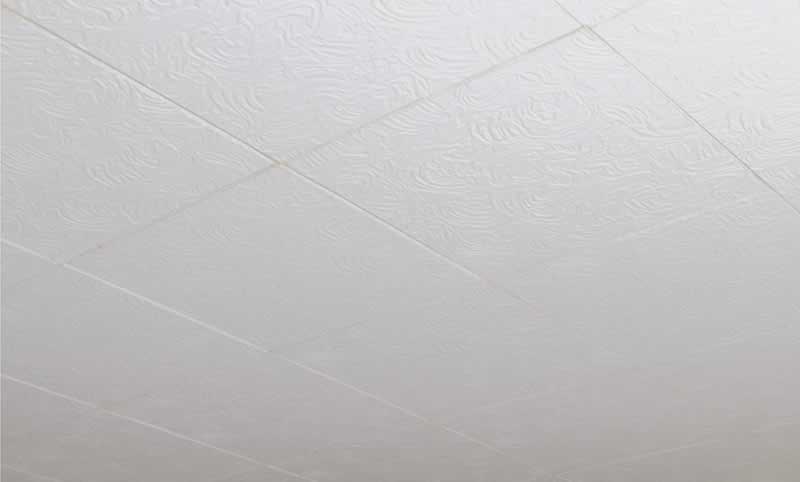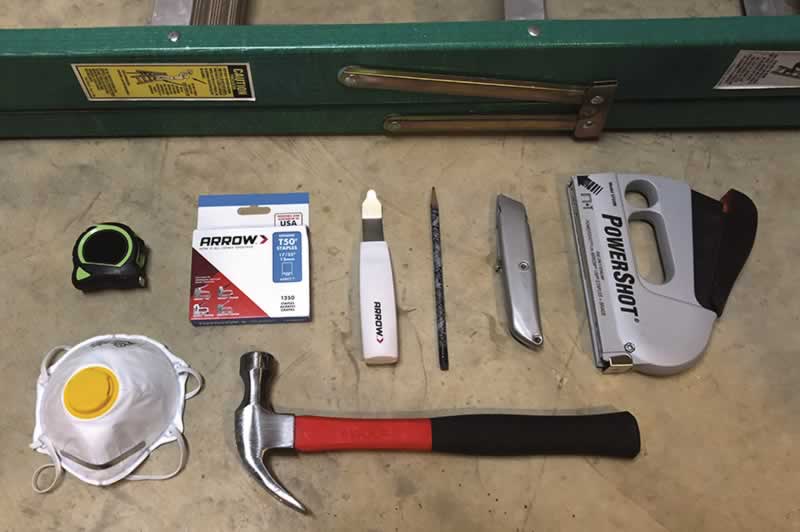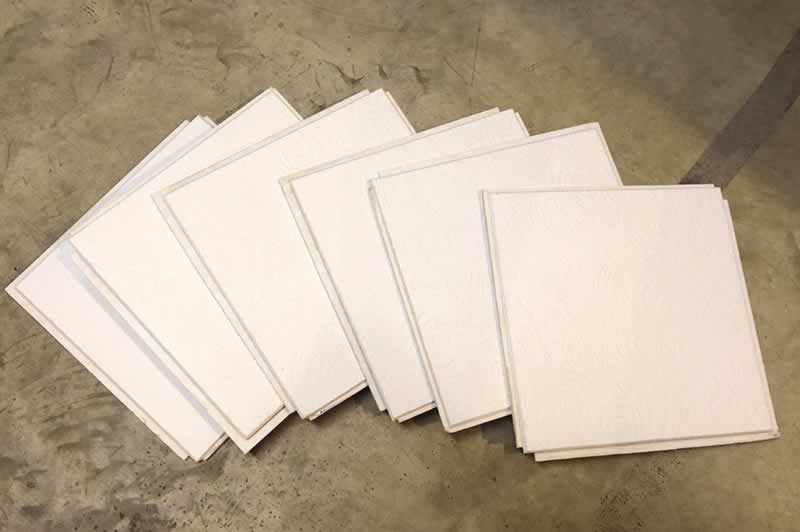
or Call Us at 1-800-776-2228


or Call Us at 1-800-776-2228


Damaged ceiling tiles from water, gouging or other mishaps make for an unsightly room. Our ceiling was water damaged recently. Since water stains can lead to mold and poor indoor air quality, we wanted to repair it quickly. We will show you how to replace ceiling tiles with the PowerShot 5700 Forward Action Staple Gun and Nailer, Arrow T50 #508 - 1/2” Staples and the SL24D Staple Lifter. Don’t forget to grab a pair of gloves and safety goggles (optional). State, local and municipal codes regarding home improvements vary depending on location, so please research before proceeding with this residential repair.


Interlocking ceiling tiles come in many designs. You will need to find replacement tiles with an identical or very similar design to match your existing ceiling. Our ceiling was fairly new so we were able to order replacements from the same retailer where we purchased the original batch. If you don’t recall where yours were purchased, check your local home center or online retailers.
Interlocking ceiling tiles come in many designs. You will need to find replacement tiles with an identical or very similar design to match your existing ceiling. Our ceiling was fairly new so we were able to order replacements from the same retailer where we purchased the original batch. If you don’t recall where yours were purchased, check your local home center or online retailers.
Assess the total damage of your tiles. You may find that some of the back sides or interlocking lips may be damaged but the damage is not visible until you start to remove the tiles.
Assess the total damage of your tiles. You may find that some of the back sides or interlocking lips may be damaged but the damage is not visible until you start to remove the tiles.
Unlike drop-ceiling acoustic tiles that fit into a suspended frame, most interlocking tiles are stapled to a wood strip framework that is laid out perpendicular to studs or joists and nailed to them. Use the Arrow SL24D Staple Lifter to quickly and easily remove the staples securing the damaged tiles to the framework. You may need to take out some of the undamaged tiles in the surrounding area to fit the new tiles together properly.
Unlike drop-ceiling acoustic tiles that fit into a suspended frame, most interlocking tiles are stapled to a wood strip framework that is laid out perpendicular to studs or joists and nailed to them. Use the Arrow SL24D Staple Lifter to quickly and easily remove the staples securing the damaged tiles to the framework. You may need to take out some of the undamaged tiles in the surrounding area to fit the new tiles together properly.
After removing all damaged tiles, unpack your replacement ceiling tiles. Fortunately, our damaged ceiling tiles were in a corner of the basement used as a laundry room. We simply removed all tiles in that corner to install replacement tiles. The replacement tiles have two sides with an extended lip for stapling to the framework, as well as a recessed groove for the lip of the tile next to it (see first photo below). The other two sides of the tile have an interlocking lip that fits into the recessed groove (see second photo below). Put the first tile in place on the framework and use the Arrow PowerShot 5700 Staple Gun to staple along the two sides with the extended lips. Place a staple every 4-6 inches. Remember, the PowerShot 5700 is a forward-action stapler, so the staple will come out of the end directly below the handle.
After removing all damaged tiles, unpack your replacement ceiling tiles. Fortunately, our damaged ceiling tiles were in a corner of the basement used as a laundry room. We simply removed all tiles in that corner to install replacement tiles. The replacement tiles have two sides with an extended lip for stapling to the framework, as well as a recessed groove for the lip of the tile next to it (see first photo below). The other two sides of the tile have an interlocking lip that fits into the recessed groove (see second photo below). Put the first tile in place on the framework and use the Arrow PowerShot 5700 Staple Gun to staple along the two sides with the extended lips. Place a staple every 4-6 inches. Remember, the PowerShot 5700 is a forward-action stapler, so the staple will come out of the end directly below the handle.
Continue stapling tiles to the framework. Push the interlocking lipped edges of the replacement tile into the grooves of one of the tiles that is already installed. Then staple the exposed lip on the other two sides of that tile. Repeat this process until all damaged tiles have been replaced.
Continue stapling tiles to the framework. Push the interlocking lipped edges of the replacement tile into the grooves of one of the tiles that is already installed. Then staple the exposed lip on the other two sides of that tile. Repeat this process until all damaged tiles have been replaced.
Check your lineups frequently. Tiles can be inconsistent in sizing which can be challenging for installation.
Check your lineups frequently. Tiles can be inconsistent in sizing which can be challenging for installation.
If you’re replacing tiles in the middle of the ceiling, you will not be able to interlock the edges on both sides of the tile in the last row. Cut the lip off one end of the tile and use glue to adhere that edge to the framework. Make certain that you are removing the larger staple edge. Staples cannot be used because they would be visible.
If you’re replacing tiles in the middle of the ceiling, you will not be able to interlock the edges on both sides of the tile in the last row. Cut the lip off one end of the tile and use glue to adhere that edge to the framework. Make certain that you are removing the larger staple edge. Staples cannot be used because they would be visible.
Step back and admire your ceiling!
Step back and admire your ceiling!
We’d love to see how your damaged ceiling tile replacement project turned out! Share your project pictures on Facebook, Instagram or X by using #MadeWithArrow or tagging Arrow Fastener.

Get Arrow tips, tricks, projects and promos in your inbox!
Hey there! We’ve updated our Privacy and Cookie Policies at the request of some of our friends in Europe. Click Accept to let us know you’re okay with the updates. Thanks!
View Cookie Policy Accept